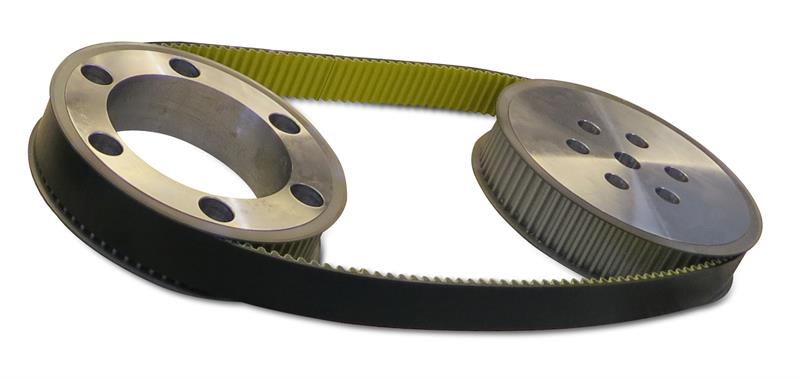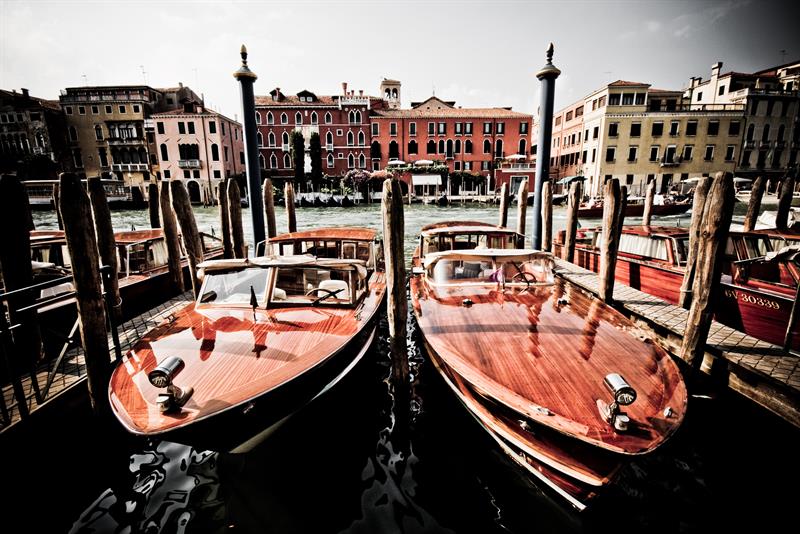The hybrid system has been developed by REAPsystems and uses the latest diesel engine technology paired with a high-power, compact and efficient electric motor and inverter, as well as a modern lithium-ion battery and advanced system control unit. The electric engine utilises a high performance Conti Synchrochain Carbon timing belt and specially manufactured pulleys from TransDev to drive the propeller. A Hybrid System Control Unit (HSCU) is connected to the clutch. The clutch is engaged when diesel operation is needed and disengaged when electric motor is needed.
Apart from the environmental benefits REAPsystems estimate an average fuel saving of at least 50%, if compared with current diesel engine boats. The short-term aim is to develop a hybrid electric taxi-boat prototype that will be demonstrated and endurance tested in Venice next year, then to influence the new regulation on vehicle emissions to be imposed by the Venetian local authority. Longer term the aim is for adoption in Venice with a roll-out to other applications to follow.
Marine hybrid electric engine
The hybrid system comprises two systems in one. Hence, the operator will benefit from high reliability and a peace of mind backup/redundancy. In the city, the engine can be 'clutched out' to allow pure electric drive. Here, at low speed and where it matters most, users will benefit from all the advantages of the electric motor: no noise, no pollution, no vibrations and no fuel consumption. During fast transits of the diesel engine, the electric motor may also assist in order to reduce exhaust emissions. During medium to high speed, such as when transiting the lagoon, the diesel engine automatically kicks in and the electric motor smoothly transitions into generator, recharging the batteries and pushing the engine into a more efficient engine loading. The choice of a belt driven design for the hybrid engine was essential to provide the silent running required. It also lowered the design cost when compared to a custom gearbox.
Creating a compact drive
As a drop-in and compact solution the hybrid electric drive-train can be installed into all existing diesel boats by any boat builder, either as a replacement or as an add-on to an existing diesel engine. There is virtually no compromise on passenger or cargo carrying capabilities.
The hybrid module design for the hybrid diesel-electric engine is very compact, light in weight, powerful and flexible. This enables it to suit a range of different engines, configurations and types of propulsion system. The hybrid module can work with the sterndrive, gearbox and shaft configuration.
When it came to the drive belt and pulley solution REAPsystems turned to TransDev and ContiTech. The high tear resistance and high dynamic load carrying capacity of the Conti Synchrochain Carbon’s high performance belt allows for synchronous drives even where boat engine compartment space is at a premium. A saving of up to 80% on overall belt width can be achieved, based on conventional timing belts when transmitting the same power requirement. This saving establishes ideal conditions for the design of economically compact, lightweight drives, such as the one in the REAPsystem hybrid engine.

The Reap belt and pulleys
Power and performance
This high-performance timing belt, with its CTD (Conti Torque Drive) profile, also makes extreme applications such as the hybrid engine possible. The newly developed CTD-profile features an arch-shaped pulley-entry geometry on the one hand, and a higher tooth on the other, providing harmonic tooth meshing and therefore ultra-smooth running. At the same time, it provides excellent protection against belt slip at high torque. The belt’s design and materials ensures the hybrid engine pulleys deliver reliable power transmission for high torques and high dynamic stressing plus longitudinally stable operation.
The smooth running is a vital aspect. Boats are an essential part of the private and commercial lives of many Venetians, but the sound of buzzing, growling, or throbbing engines often fills the air. Venice needs quiet, low vibration at low speed inside the canals of the city, which is what this project aims to achieve.
TransDev manufactured matching Synchrochain pulleys for the hybrid drive from unalloyed medium carbon steel with through holes and flanges. The optimised sectional match between timing belt and pulley and a belt construction with a multiply treated polyamide fabric, plus the dramatic reduction in the required timing belt width all make for considerably less noise, even at high belt speeds.
A tough environment
The electric motor is very responsive; it can operate down to zero rpm and change smoothly from forward to reverse rotation. This gives the driver impressive manoeuvrability and more controlled operation in the confined spaces of Venetian canals - all without gear changes.
Conti Synchrochain Carbon timing belts were designed for applications with extremely high acceleration forces as well as for the reliable transmission of high torque at low speeds. It is also well suited to transmission of lots of power involving a high dynamic load at belt speeds of up to 40 m/s.
The engine compartment of any boat is a challenge for belts and pulleys to operate in when you have the combination of cold, heat, oils, diesel, salt water and general contaminants. Venice is a salt water lagoon whilst the city canals can suffer from a wide range of man-made pollutants, both domestic and industrial. The Conti belt, consisting of polyurethane teeth and backing, carbon cord tension members and specially treated polyamide fabric, is highly resistant to oils, grease, fuel, UV and ozone, tropicalised and resistant to temperatures from -40 to +80 degrees centigrade.
One of the reasons for the slow uptake of clean hybrid technologies in the marine market is the high reliance on the reliability of the engine. A standard nine metre water taxi typically has a long, hard 20 hour day. However, TransDev claim that the Conti belt is essentially maintenance-free and the belt construction and the materials used help ensure a constant belt tension. No lubricating or re-tightening is required. The stretch of the high-tensile carbon tension member is also 50% lower compared with aramid cord. This stiffness results in initial tension losses dropping almost to zero over the lifetime of the belt.
Next steps
ContiTech and TransDev have continued to work closely with REAPsystems, performing on-site checks of the electric motor belt tension and alignment. They remain fully committed to the success of such an important project. Trials of the boat are expected to continue through the winter with a Venice debut in 2017.
The Venice water taxi Water taxis are the luxury means of transport in Venice, unless you want the romantic and more lingering experience of the gondola that is. They hold up to 12 people and feature comfortable leather seats. They are 8.8m long, 2.1m wide and despite the 150hp engine they must adhere to the 3mph speed limit in the city centre inorder to protect the canals. The taxis have a fiberglass hull and mahogany finish in and around the cabin.
|








